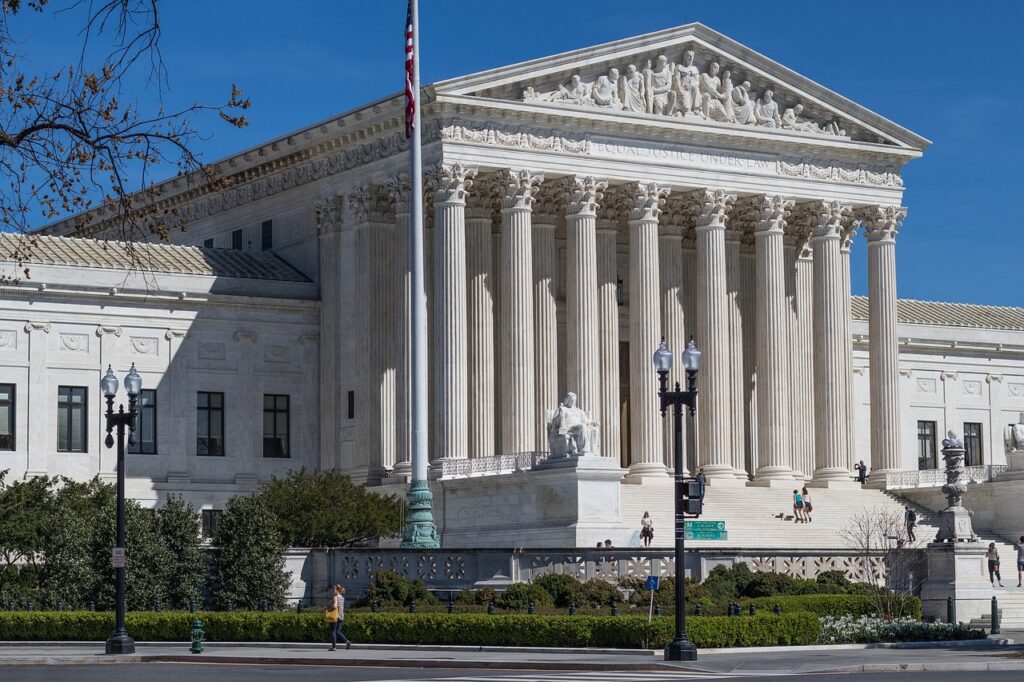Fall 1938
The relevance of understanding the dynamics of the Supreme Court spans back to the very founding of the United States and the evolving principles that shaped its highest judicial body. Established in 1787 by the Founding Fathers, the Supreme Court initially operated without a defined number of judges or explicit qualifications. Over the ensuing decades, the court’s composition fluctuated between 5 and 9 justices, settling at its current nine-seat configuration. The contentious issue of “court packing” emerged in 1937 when President Franklin D. Roosevelt proposed expanding the court to 15 justices, reflecting a pivotal moment in the court’s history and the intersection of partisan politics.
Despite stabilizing at nine seats, the Supreme Court remains a focal point of political drama, particularly concerning vacancies and appointments. Vacancies typically arise upon the passing of a sitting justice, triggering intense partisan battles over presidential nominations. This intersection of judicial appointments with political ideologies underscores the court’s pivotal role in shaping national discourse and policy. The politicization of judicial appointments, exemplified by the 2016 episode involving President Obama’s blocked nomination, highlights the enduring tensions surrounding the court’s composition and influence.
Current Issues within the Supreme Court
Contemporary debates surrounding the Supreme Court extend beyond structural concerns to encompass substantive issues of judicial philosophy, constitutional interpretation, and the court’s role in American democracy. Recent years have witnessed heightened scrutiny of Supreme Court decisions on pivotal issues such as abortion rights, voting rights, and presidential powers. The court’s conservative shift, marked by appointments during the Trump administration, has amplified concerns over the court’s ideological balance and its implications for fundamental rights and liberties.
The retirement and tenure of Supreme Court justices have also emerged as pressing issues, with calls for mandatory retirement ages gaining traction among certain segments of the public. The notion of lifetime appointments, while intended to insulate justices from political pressures, has sparked debates over judicial accountability and the potential for justices to remain disconnected from societal norms and contemporary issues over extended tenures. Proposals for term limits or retirement ages aim to ensure a dynamic and responsive judiciary that reflects evolving societal values and priorities.
Survey Reflections and Public Opinion
The survey findings from 1938, revealing strong public support for mandatory retirement ages for Supreme Court justices, resonate with contemporary discussions on judicial reform. The rationale behind such sentiments encompasses concerns for judicial vitality, alignment with societal changes, and the need for periodic refreshment of judicial perspectives. Despite enduring public support for reforms, including term limits or retirement ages, the entrenched nature of judicial appointments and constitutional provisions have stymied substantive changes.
The enduring debate over Supreme Court composition and tenure underscores broader questions about democratic governance and institutional integrity. As public trust in institutions fluctuates and societal challenges evolve, the Supreme Court’s role as a bastion of justice and a guardian of constitutional principles remains subject to intense scrutiny and debate. The aspirations for a responsive, accountable judiciary reflect the ongoing quest for equitable governance and a judiciary that mirrors the aspirations and values of the American populace.
One key driver of public distrust is the perception that Supreme Court justices are increasingly aligned with partisan interests, reflecting broader divisions within society. The politicization of judicial appointments and confirmation processes has reinforced this perception, with justices often viewed through a partisan lens rather than as impartial interpreters of the law. Additionally, the opacity of the court’s deliberations and decision-making processes has contributed to public skepticism, fostering a sense of detachment from democratic accountability.
Conclusion
The evolution of the Supreme Court, from its inception to contemporary debates, epitomizes the intersection of history, politics, and constitutional principles. As debates over court packing, judicial appointments, and tenure persist, the Supreme Court continues to navigate the complexities of national discourse and constitutional interpretation. The enduring quest for judicial accountability, ideological balance, and responsive governance underscores the evolving dynamics of American democracy and the enduring pursuit of justice under the law.


